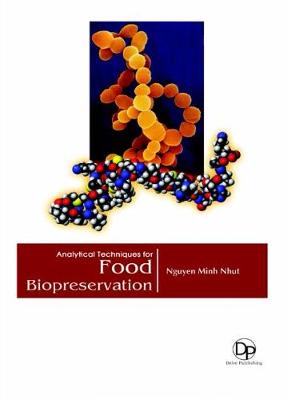Food biopreservation involves the use of microbiota or antimicrobials as an efficient way to preserve the food and to extend it shelf life. For centuries, there have been traditional tactics of such natural food preservation by employing lactic acid bacteria (LAB) in the fermentation process. As LAB grows and proliferates, their metabolites like lactic acid, acetic acid, nisin and other bacteriocins will inhibit the growth of spoilage and pathogenic microbes; and hence, the food is properly preserved. To this extent, LAB has become a classical and solid foundation in food preservation technology. The advent industrial food processing discovered other methods, other biopreservative agents that have been used tremendously in food production nowadays. Apart from LAB, yeast and bacteriophage have also been researched and sucessfully commercialized for food biopreservation and decontamination. While being regarded as more natural than chemical agents for food preservation, the use of biopreservative agents has become a major topic of research trend in food science.
This book covers scientific interests in food biopreservation in the recent decade, ranging from seeking newly potential agents to the working mechanism of certain microorganism in food preservation process. The major session will deal with the investigation on new antimicrobials for food preservation from various sources, such as novel fungi, plant extracts, and less known bacteria. For instance, this major research trend in recent years has discovered newly found antimicrobial peptide, essential oils, and enzymes that could be used in food biocontrol, such as diketopiperazine from B.cereus, plantaracin ZJ5 from l.plantarum ZJ5 and (+) Limonene from citrus fruits. These results have bolstered the rapid development of biopreservative agents today.
The second part of this book will deal with the insight of classical agents such as LAB bacteriocins. Nisin, a famous antimicrobial peptide produced by L.lactis, is studied deeply in its cancer inhibition ability and its anti-infection of other foodborne diseases. Other bacteriocins from LAB were also involved in the research trend of how their production, mode of action and applications in food and medical sectors.
Aspergillus species, Salmonella, L.monogenes, Escherichia coli and other pathogenic microbes have evolved to tolerate the bacteriocins, which impose adverse problems on food biopreservation industry. Therefore, studying of their resistance mechanism has also become an interesting topic, gauging scientific attention for decades. The latest part of this book will discuss on researches on the resistance of pathogenic and spoilage bacteria towards LAB and bacteriocins. Aiming to support a deeper understanding of food biopreservation and the roles of biopreservative agents as well as beneficial and pathogenic microbial action mechanism, cross-disciplinary methods of studies have been employed. Micro-biological, biochemical, genetic methods and analytical instruments are applied at different levels, which will facilitate readers to comprehend biopreservation and to get know to current experimental methods by worldwide researchers.
- ISBN13 9781680957488
- Publish Date 30 November 2016
- Publish Status Active
- Publish Country CA
- Imprint Delve Publishing
- Format Hardcover
- Pages 292
- Language English
